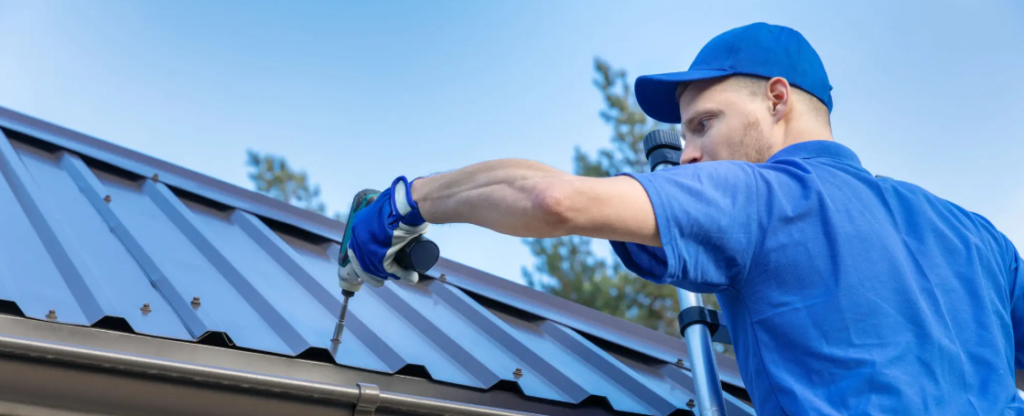Thinking about giving your home a durable and stylish upgrade? Metal roofing might just be the perfect choice for you! Known for its resilience against harsh weather, energy efficiency, and aesthetic versatility, metal roofing is becoming increasingly popular among homeowners.
Whether you’re aiming to reduce cooling costs with its heat-reflective properties or seeking a long-lasting roofing solution, metal roofing offers a plethora of benefits. In this comprehensive guide, we’ll walk you through everything you need to know about installing metal roofing—from selecting the right materials and tools to the final touches that ensure a watertight and visually appealing finish. So, if you’re contemplating making the switch to metal roofing, you’re in the right place to learn how to do it right and enjoy the lasting benefits it brings to your home.
What is Metal Roofing?
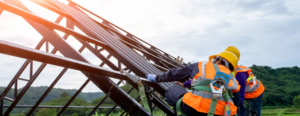
Metal roofing is a durable roofing material made from metal pieces or tiles characterized by its high resistance, impermeability, and longevity. It is a popular choice for residential, commercial, and industrial buildings due to its ability to withstand extreme weather conditions, including heavy rain, hail, and high winds. Metal roofs are also fire-resistant and can contribute to energy savings by reflecting solar radiant heat, which can reduce cooling costs in warmer climates.
Available in a variety of styles and colors, metal roofing can mimic the appearance of traditional roofing materials like asphalt shingles, clay tiles, and wood shakes, allowing for aesthetic versatility. Its lightweight nature also minimizes the load on a building’s structure. With proper installation and maintenance, metal roofing systems can last for several decades, making them a cost-effective and environmentally friendly roofing solution.
Why Choose Metal Roofing?
Choosing metal roofing offers unparalleled benefits, primarily due to its durability against harsh weather conditions such as rain, hail, and high winds. This resilience translates to a longer lifespan, making it a cost-effective option in the long run. Additionally, metal roofs are known for their energy efficiency, reflecting solar heat to reduce cooling costs during warmer months.
Beyond practicality, metal roofing appeals to aesthetic preferences with its wide variety of styles that can complement any architectural design. Its lightweight nature further ensures minimal stress on your home’s structure, enhancing safety and longevity. Opting for metal roofing means investing in a solution that combines durability, efficiency, and style, aligning with the educational intent to inform homeowners about superior roofing choices.
Durability Against Weather
Metal roofing stands out for its exceptional durability against weather. It is built to withstand extreme conditions, including heavy rain, hail, and high winds, ensuring your home stays protected year-round.
Energy Efficiency for Homes
Metal roofs contribute significantly to energy efficiency in homes. Their reflective properties minimize heat absorption, leading to reduced cooling costs and a more comfortable living environment during hot weather.
Aesthetics and Variety of Styles
The aesthetic appeal of metal roofing is undeniable. Available in a wide range of styles and colors, it can mimic traditional materials or offer a sleek, modern look, allowing homeowners to customize their exterior to their exact preferences.
Tools and Materials Needed
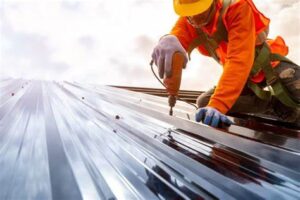
For a successful metal roofing installation, having the right tools and materials is crucial. Essential tools include:
- A hammer for securing underlayment
- Metal snips for cutting panels to the correct size
- A screw gun for fastening screws efficiently
- A measuring tape for accurate measurements
The primary materials needed are:
- Metal roofing panels, which form the main protective layer
- Underlayment for moisture protection
- Flashing to waterproof edges and critical areas
- Screws with rubber washers to secure the panels while preventing water ingress
Together, these tools and materials ensure a durable, weather-resistant, and aesthetically pleasing metal roof.
Hammer for Securing Underlayment
A hammer is essential for securely attaching the underlayment to the roof deck, providing a stable foundation for the metal panels.
Metal Snips for Cutting Panels
Metal snips are crucial for trimming metal roofing panels to the exact dimensions required, ensuring a perfect fit.
Screw Gun for Fastening Screws
A screw gun streamlines the process of fastening screws, making the installation quicker and more efficient.
Measuring Tape for Accurate Measurements
A measuring tape is indispensable for taking precise measurements, critical for planning the layout and cutting panels accurately.
Metal Roofing Panels as Main Material
Metal roofing panels are the primary material, offering durability, weather resistance, and aesthetic appeal.
Underlayment for Moisture Protection
Underlayment acts as a barrier against moisture, protecting the roof deck from water infiltration.
Flashing for Waterproofing Edges
Flashing is used to waterproof edges and critical areas, such as around chimneys and vents, preventing leaks.
Screws with Rubber Washers
Screws with rubber washers are used to secure metal panels to the roof, ensuring a watertight seal and preventing water ingress.
Preparing the Roof
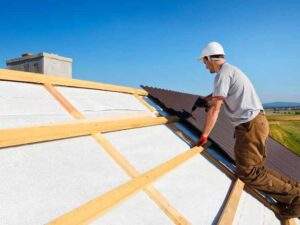
Preparing the roof is a critical step before installing metal roofing. It involves removing old roofing materials to create a clean, stable surface. This is followed by inspecting the roof deck for any damage that could undermine the new installation, such as rot or structural weaknesses.
The final step is installing underlayment for water resistance, which provides an additional layer of protection against moisture, ensuring the longevity and durability of the metal roofing system. Each of these steps is vital for a successful installation, safeguarding the home against future weather-related vulnerabilities.
Removing Old Roofing Materials
The first step in preparing for a new metal roof involves carefully removing any existing roofing materials. This ensures a clean slate for the installation, allowing for a thorough inspection of the underlying structure.
Inspecting the Roof Deck for Damage
Once the old materials are removed, a detailed inspection of the roof deck is essential. This step identifies any areas of damage or decay that need repair to support the new metal roofing securely.
Installing Underlayment for Water Resistance
Finally, installing a high-quality underlayment is crucial for providing an additional layer of moisture protection. This barrier helps extend the lifespan of the metal roofing by preventing water infiltration.
Installing Metal Roofing Panels
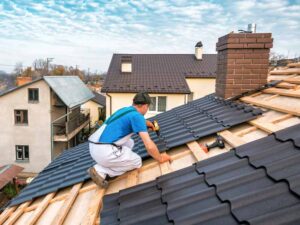
Installing metal roofing panels is a meticulous process that begins with measuring and cutting panels to fit the specific dimensions of the roof. The panels are then laid from the bottom up, ensuring each piece overlaps the one below it by at least 1.5 inches to create a watertight seal. This overlapping technique is crucial for preventing water ingress and ensuring the longevity of the roofing system.
Each panel must be securely fastened at designated points, with special attention to maintaining a straight alignment to achieve both optimal functionality and aesthetic appeal. This systematic approach ensures a durable, weather-resistant metal roof installation.
Measuring and Cutting Panels to Fit
Measuring and cutting panels accurately is the first crucial step in the installation process. This ensures that each panel fits perfectly on the roof, providing a solid foundation for the entire system.
Laying Panels from the Bottom Up for Proper Overlap
The panels should be laid from the bottom up, which allows for proper overlapping. This technique is essential for creating a seamless barrier against water.
Overlapping Panels by at Least 1.5 Inches
Ensuring that each panel overlaps the one below it by at least 1.5 inches is critical. This overlap is key to preventing water ingress, securing the roof against leaks and potential damage.
Securing the Panels
Securing the panels properly is a pivotal step in metal roofing installation, ensuring each panel is tightly fastened to the roof deck. This is achieved by using screws with rubber washers, placed at designated points along the panel to prevent water from seeping through. It is crucial that these screws are evenly spaced and properly sealed against the panel to maintain the roof’s integrity and water resistance.
Properly securing the panels not only prevents leaks but also contributes to the overall structural stability of the roofing system, safeguarding the home against adverse weather conditions.
Screwing Panels into Place at Designated Points
Screwing panels into place at designated points is essential for a secure installation. This step anchors the panels firmly to the roof, ensuring they withstand various weather conditions.
Ensuring Screws are Properly Sealed Against Water
Properly sealing screws against water is critical to prevent leaks. Using screws with rubber washers helps create a watertight seal, protecting the roof from water ingress and potential damage.
Installing Flashing
Installing flashing is a crucial aspect of metal roofing that ensures waterproofing around the roof’s edges and features like chimneys and vents. Flashing acts as a barrier, directing water away from these vulnerable areas and preventing leaks. It is meticulously fitted around these sections, with particular attention to sealing all joints effectively.
This step not only enhances the roof’s water resistance but also extends the overall lifespan of the roofing system by safeguarding against water damage. Proper installation of flashing is fundamental to maintaining the roof’s integrity and ensuring a leak-free home.
Around Roof Edges for Extra Protection
Installing flashing around roof edges provides extra protection against water infiltration, ensuring these critical junctions are securely sealed.
Around Roof Features to Prevent Leaks
Flashing is also essential around roof features, such as chimneys and vents, to prevent leaks by directing water away from these vulnerable areas.
Final Inspections and Maintenance
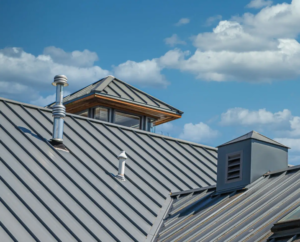
After installing a metal roof, conducting final inspections is crucial to ensure every component is correctly installed and there are no gaps or loose screws. This step verifies the integrity and readiness of the roof to withstand weather conditions. Regular maintenance is also essential to prolong the roof’s lifespan.
It includes cleaning to prevent debris buildup and periodic checks to address any potential issues early. These practices help maintain the roof’s functionality and aesthetic appeal, ensuring it continues to protect the home effectively.
Checking for Gaps and Loose Screws After Installation
Checking for gaps and loose screws after installation is vital to ensure the metal roof’s integrity and weather resistance. This precaution helps prevent potential leaks and structural weaknesses.
Regular Cleaning to Prevent Debris Buildup
Regular cleaning is essential to prevent debris buildup on the metal roof. Removing leaves, dirt, and other materials helps maintain the roof’s appearance and functionality, ensuring its longevity.
Get Professional Help from Us
For homeowners looking to ensure their metal roofing is installed with the utmost precision and care, getting professional help is the way to go. Our team of experienced professionals is equipped with the knowledge and tools necessary to handle every aspect of metal roofing installation, from initial preparation to final inspections and maintenance. By choosing our services, homeowners can rest assured that their roofing project is in capable hands, guaranteeing a durable, efficient, and aesthetically pleasing metal roof that will protect their homes for years to come. Contact us today to get started!
Parting Thoughts
Choosing the right roofing material is crucial for the longevity and protection of your home. Metal roofing offers a blend of durability, energy efficiency, and aesthetic appeal unmatched by many other materials. By following the correct installation procedures, ensuring regular maintenance, and opting for professional help when needed, homeowners can significantly enhance the value and safety of their property.
Remember, a well-installed metal roof not only shelters you from the elements but also contributes to energy savings and increases your home’s curb appeal. Embrace the benefits of metal roofing and enjoy the peace of mind that comes with a secure, stylish, and sustainable roofing solution.
